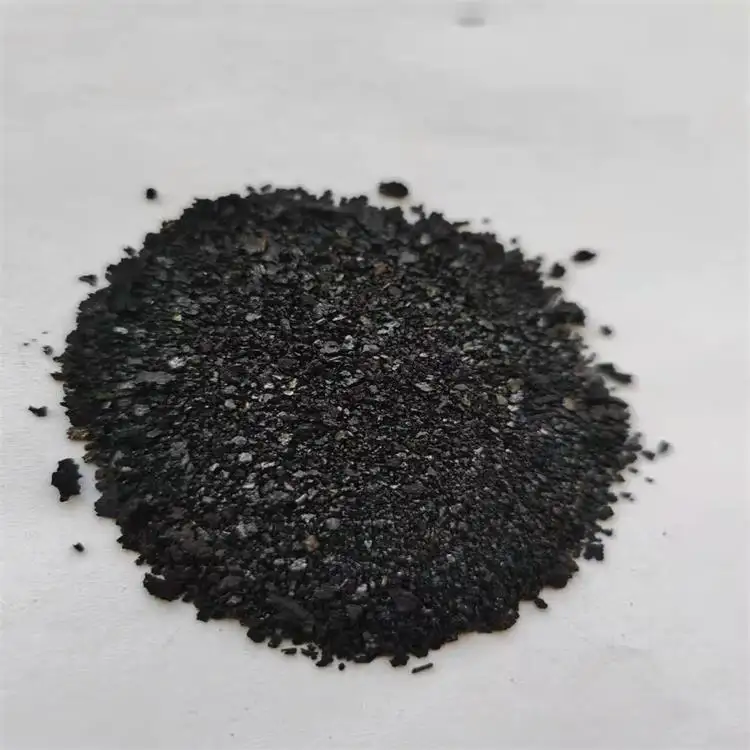Sulphur Black 1 Production Insights and Manufacturer Overview for Textile Industry
Understanding Sulphur Black 1 A Key Player in the Dye Industry
Sulphur Black 1 is one of the most widely used dyes in the textile industry, known for its deep black color and excellent fastness properties. As a sulfur dye, it is favored for its cost-effectiveness and ability to color a variety of fibers, particularly cotton. This article explores the characteristics, applications, and manufacturers of Sulphur Black 1, along with its significance in the global dye market.
Characteristics of Sulphur Black 1
Sulphur Black 1 is characterized by its high stability and durability after dyeing. It boasts excellent lightfastness, washfastness, and resistance to rubbing, making it an ideal choice for textiles that require longevity. The dye is produced through a chemical reaction involving sulfur and organic compounds, resulting in a complex structure that enhances its coloring properties.
One of the unique features of Sulphur Black 1 is its application process. Unlike other dye types that may require high temperatures, Sulphur Black 1 can be applied at relatively lower temperatures, making it an energy-efficient option for manufacturers. This attribute not only saves costs but also reduces the environmental footprint of dyeing processes.
Applications in the Textile Industry
Sulphur Black 1 is primarily used to dye cotton and other cellulosic fibers, but it can also be employed on polyester blends. The versatility of this dye contributes to its popularity across various sectors of the textile industry, including apparel, home textiles, and industrial textiles.
In the fashion industry, the demand for deep black shades remains high, especially in casual wear and formal clothing. Designers favor Sulphur Black 1 for its strong visual appeal and the robustness it offers in terms of fabric performance. Additionally, the dye's compatibility with various finishing processes ensures that it meets the aesthetic and functional expectations of modern consumers.
sulphur black 1 manufacturers

The home textiles sector also benefits from Sulphur Black 1
. Products like bed linens, curtains, and upholstery fabric often require colors that remain vibrant and true even after multiple washes. Here, the dye’s washfastness comes into play, making it a preferred choice among manufacturers.Manufacturers and Market Dynamics
The market for Sulphur Black 1 encompasses several manufacturers worldwide. Leading manufacturers focus on maintaining high-quality production standards, ensuring that the dye is free from impurities and meets international regulations regarding safety and environmental impact.
When selecting a manufacturer for Sulphur Black 1, several factors should be considered. Quality assurance, adherence to environmental standards, and the ability to offer technical support are crucial. Many manufacturers now invest in sustainable practices, utilizing eco-friendly chemicals and processes to produce Sulphur Black 1. This shift is driven by increasing global awareness of environmental issues and the demand for sustainable products in the textile sector.
The competitive landscape also shapes the availability and pricing of Sulphur Black 1. Manufacturers often engage in research and development to improve the dye’s properties, leading to innovations that offer enhanced performance and new applications. This dynamic environment fosters a continuous evolution in the product offerings, ensuring that end users can meet changing market needs.
Conclusion
Sulphur Black 1 remains a fundamental component of the textile dyeing process, valued for its rich color and exceptional fastness properties. Its versatility allows for wide-ranging applications, from fashion to home textiles. As manufacturers continue to seek sustainable and efficient production methods, the market for Sulphur Black 1 is likely to expand, reflecting the growing importance of ecological considerations in the textile industry.
In conclusion, the significance of Sulphur Black 1 as a dye cannot be understated. With a robust network of manufacturers producing this essential dye, the textile industry is poised to meet consumer demands effectively while embracing sustainable practices for a greener future. As we look forward to advancements in dye technology, Sulphur Black 1 will undoubtedly play a pivotal role in shaping the future of textile coloring.
-
The Timeless Art of Denim Indigo Dye
NewsJul.01,2025
-
The Rise of Sulfur Dyed Denim
NewsJul.01,2025
-
The Rich Revival of the Best Indigo Dye
NewsJul.01,2025
-
The Enduring Strength of Sulphur Black
NewsJul.01,2025
-
The Ancient Art of Chinese Indigo Dye
NewsJul.01,2025
-
Industry Power of Indigo
NewsJul.01,2025
-
Black Sulfur is Leading the Next Wave
NewsJul.01,2025

Sulphur Black
1.Name: sulphur black; Sulfur Black; Sulphur Black 1;
2.Structure formula:
3.Molecule formula: C6H4N2O5
4.CAS No.: 1326-82-5
5.HS code: 32041911
6.Product specification:Appearance:black phosphorus flakes; black liquid

Bromo Indigo; Vat Bromo-Indigo; C.I.Vat Blue 5
1.Name: Bromo indigo; Vat bromo-indigo; C.I.Vat blue 5;
2.Structure formula:
3.Molecule formula: C16H6Br4N2O2
4.CAS No.: 2475-31-2
5.HS code: 3204151000 6.Major usage and instruction: Be mainly used to dye cotton fabrics.

Indigo Blue Vat Blue
1.Name: indigo blue,vat blue 1,
2.Structure formula:
3.Molecule formula: C16H10N2O2
4.. CAS No.: 482-89-3
5.Molecule weight: 262.62
6.HS code: 3204151000
7.Major usage and instruction: Be mainly used to dye cotton fabrics.

